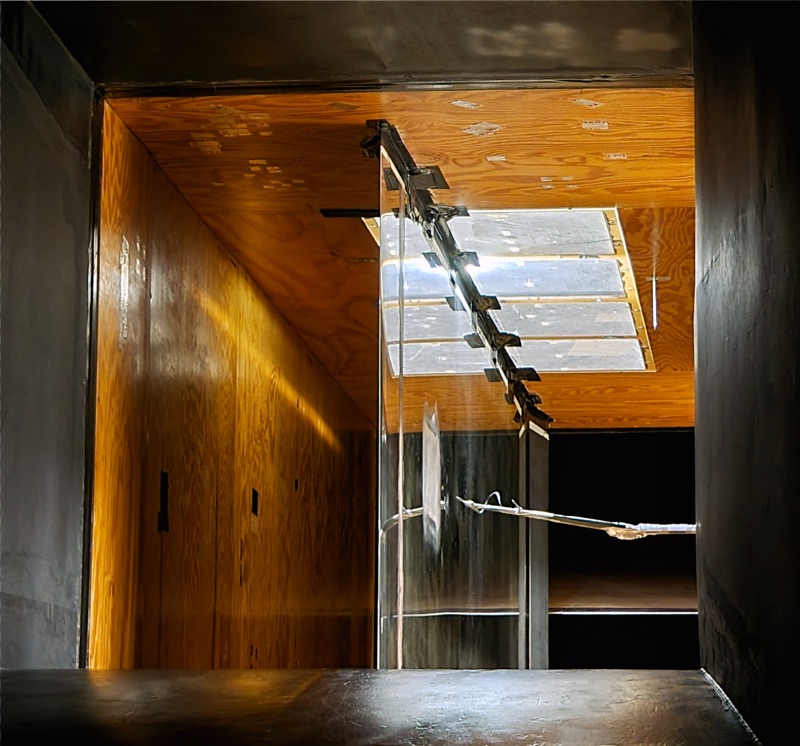
The Klebanoff-Saric Wind Tunnel (KSWT) is a low-speed, low-disturbance, closed-return facility historically suitable for boundary-layer stability and transition studies and specifically designed to obtain lowest-achievable levels of freestream turbulence and acoustic noise. It features two interchangeable test sections that measure 1.4 m x 1.4 m x 4.9 m. One is used primarily for measurements of flat plate boundary layers. The other is used primarily for swept-wing experiments. A 150 hp DC motor provides flow velocities up to 30 m/s with turbulence intensities as low as 0.02%. Measurement techniques at the KSWT include hotwire anemometry, infrared thermography, and naphthalene flow visualization.
The KSWT was built in 1970 by Dr. Philip Klebanoff at the National Bureau of Standards for boundary-layer stability measurements in low-disturbance environments. The tunnel was relocated to Arizona State University in 1984 and to Texas A&M University (TAMU) in 2005 under the direction of Dr. William Saric. At all three sites, the KSWT has been continuously improved to provide the best possible flow quality. To achieve this, the circuit includes numerous features such as low-angle diffusers with splitter plates, seven seamless high-tension turbulence screens, an inlet contraction designed to properly homogenize inflow turbulence, multiple acoustic dampers, and pneumatic test-section isolators.
Over its history, the KSWT has been used for numerous experiments on boundary-layer receptivity to sound and surface roughness, instabilities of Tollmien-Schlichting waves and crossflow vortices, secondary instabilities, roughness-induced transition, and turbulent wedge spreading. This work aims to improve understanding, prediction, and control of laminar-to-turbulent transition. That knowledge is key to improving aerodynamic efficiency of aircraft, wind turbine blades, and multiple other systems. Work in the KSWT has been performed by numerous graduate and undergraduate students, faculty, and other researchers with funding from the U.S. Air Force, the U.S. National Science Foundation, NASA, and other organizations. That effort continues today as research in the KSWT continues to explore boundary-layer instabilities and transition to turbulence with a special emphasis on collaborations between high-quality experiments, simulations, and theory.


